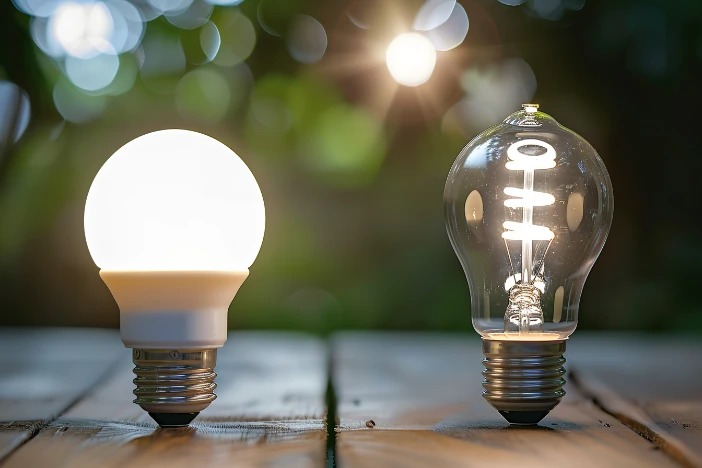
What information should you compare when buying a lightbulb?
Many lamps and lighting fixtures can accommodate a variety of light bulbs. Your choice can be based on factors that may be ecological, financial, aesthetic or functional. It simply depends on your own individual preference and/or situation. This section of our guide looks at the specific lighting needs of each room and compares multiple lightbulb types. The Federal Trade Commission (FTC) mandates that light bulb manufacturers provide specific information. Look at the Lighting Facts section displayed on the packaging for relevant information and to compare light bulb options.

Brightness
When you look at the light emitted by two bulbs side by side, it’s usually pretty easy to determine which one is brighter. It can be a different story, however, when looking at their labels. If you’re older (and I’ll leave that determination to your own discretion), you grew up thinking that the greater the watts, the brighter the light bulb. Now you have something called a “lumen” to think about.
How do watts and lumens differ?
Before CFLs and LEDs were developed, incandescent bulbs were the most widely used. Wattage is a good reference point for comparing brightness for this type of light bulb. The higher the number of watts, the brighter the bulb burns. But newer lighting technologies make that reference point obsolete.
Watts
Wattage is a measurement of energy use and not brightness. The more watts, the more energy the bulb consumes to generate light. CFL and LED light bulbs require far less energy than incandescent bulbs to power them. But, they still emit equivalent or brighter light.
Lumens
A lumen is an appropriate measurement for the amount of light (i.e. brightness) emitted. Bulbs may use the same number of watts, but the number of lumens determines which is brighter. At equivalent wattage, LEDs are brighter than other light bulb types.
How many lumens do I need?
The shape, size, ceiling height and wall color of your room all affect the brightness required to fill it with ample light. How you use the light is also an important consideration. Do you need it for general ambient light, task lighting or accent lighting? Here are rough estimates of the number of lumens needed by room type and usage.
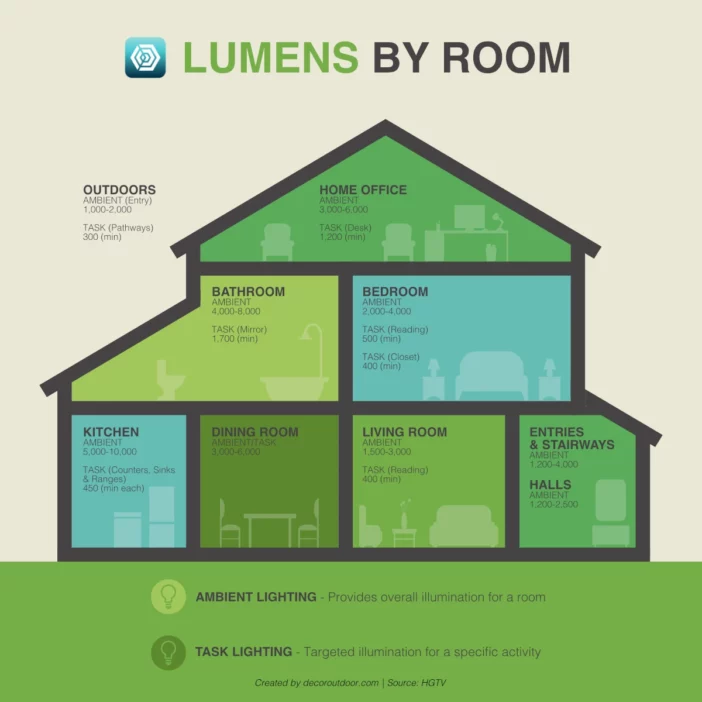
Cost
The estimated annual cost is listed on the labeling of most light bulbs. This is a good way to compare the financial impact of different options if you are putting together an annual budget. One thing to note, however, is that some bulb types last longer than others. You may have to replace them more often, depending on your usage. LED light bulbs are far more expensive than their CFL and incandescent counterparts, but they rarely need to be changed out due to regular wear and tear. This makes them more cost-effective in the long run. Here are estimates of the costs associated with various light bulb types (annual and over 25,000 hours).
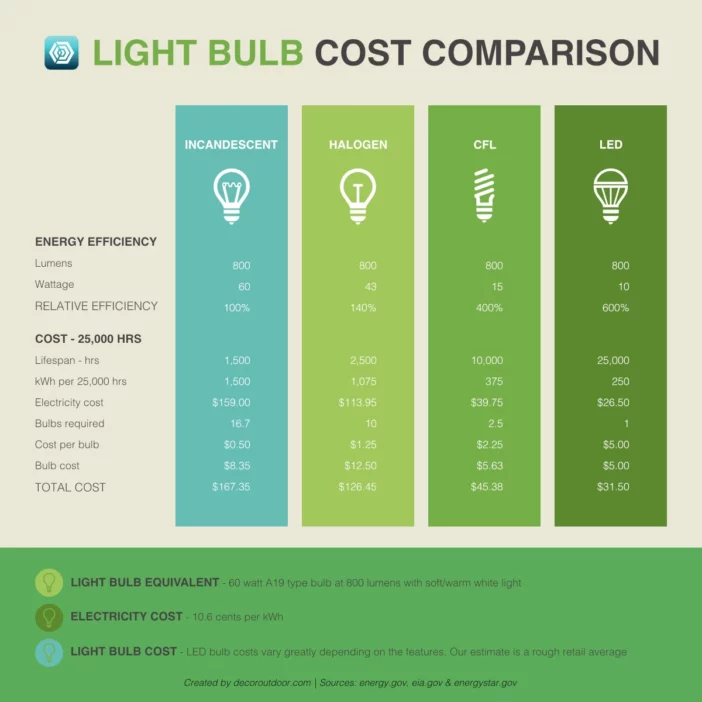
Light Bulb Lifetime
How a bulb generates light impacts its expected life. Incandescent bulbs last the shortest amount of time. Their filament expands and contracts as it heats and cools every time electricity passes through it. This leads to metal fatigue until the filament breaks down and the bulb “burns out.” CFL light bulbs don’t have filaments, but their metallic electrodes “evaporate” over time (though longer than incandescents). This results in conductivity failure and creates the familiar blackened ends we recognize in burned-out fluorescent tubes. LED light bulbs excite electrons to create light and have no filament or chemical wear and tear. Consequently, they last an incredibly long time. They never actually burn out but simply decrease in luminosity. The estimated lifetime of LED bulbs is calculated to the time they emit 70% of their original brightness – almost always decades long.
Light Appearance
The thermodynamic temperature of light emitted by a bulb determines its appearance and is measured in Kelvins. It has nothing to do with the heat generated by the bulb. Contrary to what we might typically think of regarding color, the higher the temperature, the cooler the light appears. The visual scale for light bulbs runs from warm (candlelight is ~1,900k) to cool (car headlight is ~6,000k). Light color can affect the “feel” of a room or space in the absence of lamp shades or bulb covers. Studies have shown that alertness, mood and cognitive performance are influenced by the color temperature and luminance of light [Li, Wang, Shen, Sun, Xie, Zhang, & Zheng 2017]. So, you might want to be at least aware of the appearance when choosing a light bulb.
Energy Used and Energy Efficiency
If you are more environmentally conscious, you might want to opt for “greener” or more eco-friendly light bulbs that focus on efficiently converting energy into light. Efficiency is determined by dividing the generated light (lumens) by the energy used (watts). LEDs are the most efficient light bulbs, followed by CFLs and incandescent ones. Efficient bulbs are typically identified by the Energy Star certification seal on the packaging.
Ready to make a light bulb choice
Now that you understand the different kinds of light bulbs and their abilities, you’re almost ready to make selections. The final section of our guide reviews several lamp and fixture lighting types and provides suggestions for the best lightbulbs.
References
- Li, H., Wang, H., Shen, J., Sun, P., Xie, T., Zhang, S., & Zheng, Z. (2017, September). Non-visual biological effects of light on human cognition, alertness, and mood. In Light in Nature VI (Vol. 10367, p. 103670D). International Society for Optics and Photonics.

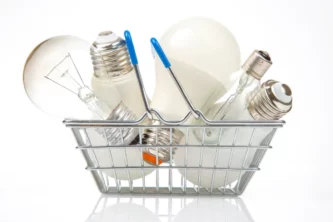

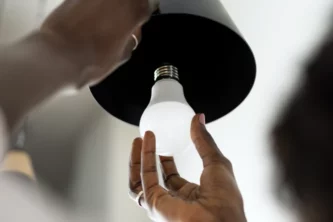




Leave a Reply